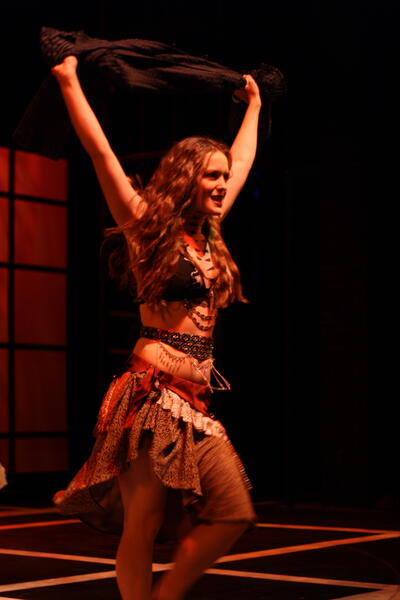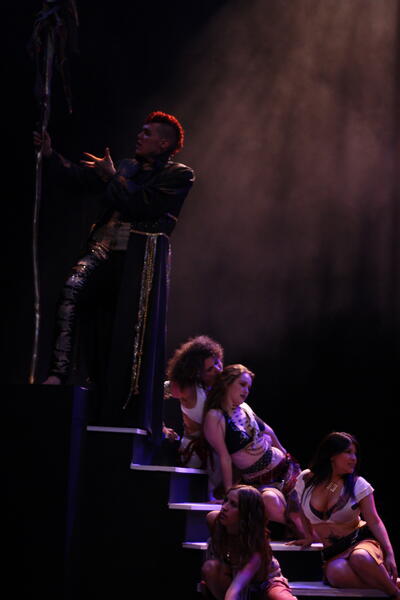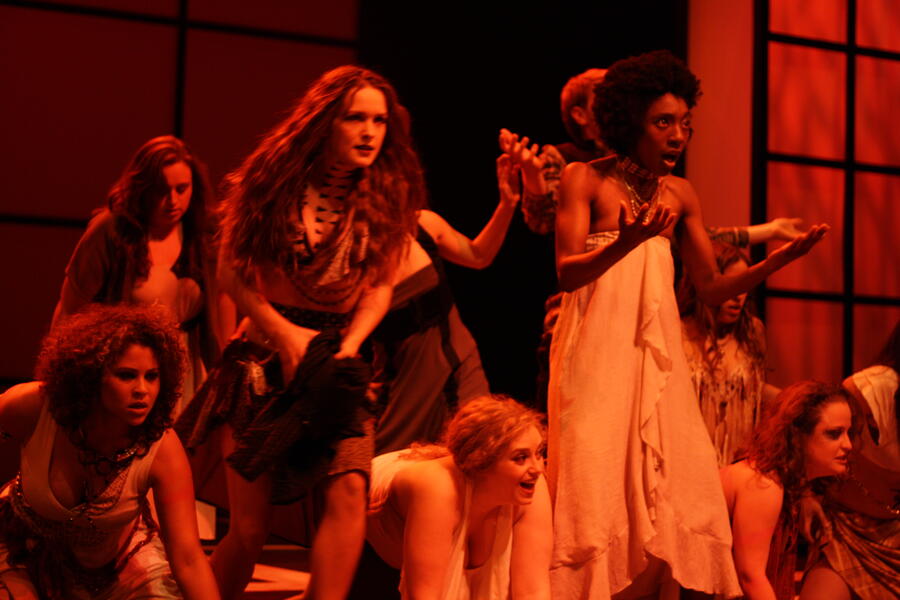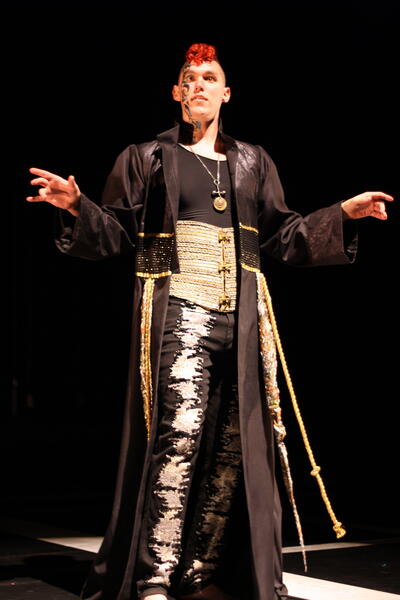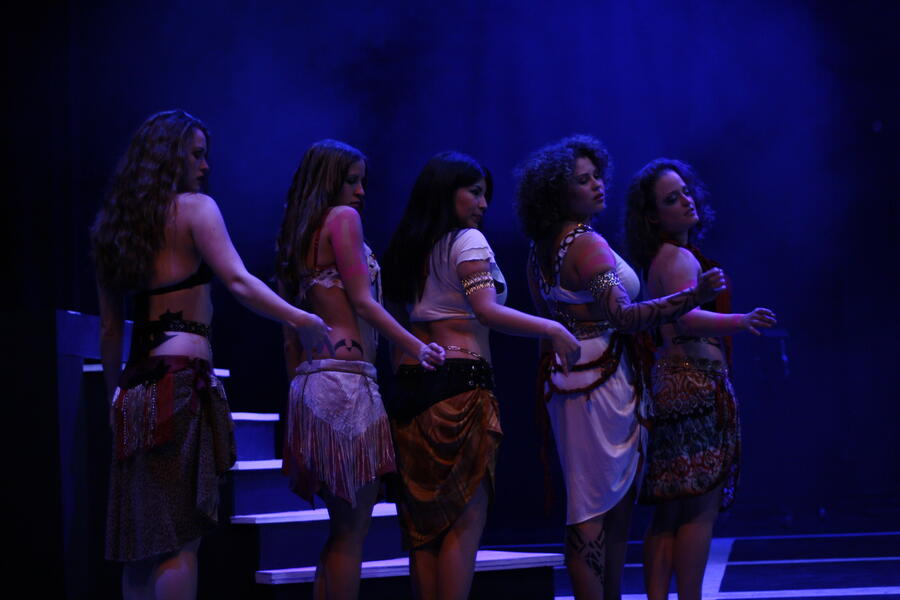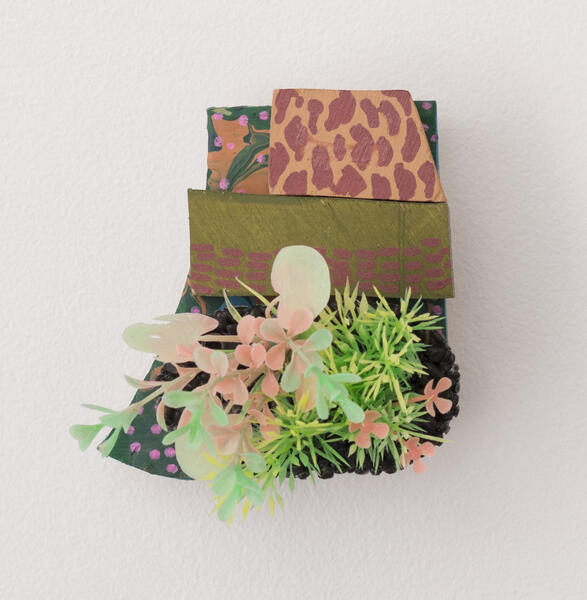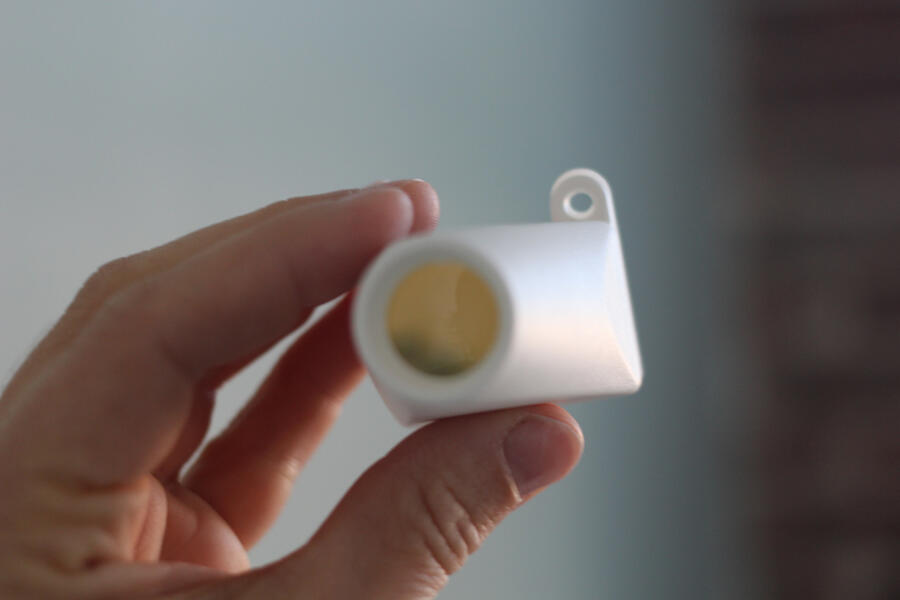This production of Euripides' classic play, which was awarded a Kennedy Center American College Theatre Festival certificate of merit for ensemble, was a very rewarding project for applying the rasaboxes to rehearsal and production. It was a Towson University Production directed by Ryan Clark.
As the movement and ensemble director, I had the privilege of holding a two-week workshop with the students and the director, before we began scene rehearsals with the script. Thus we were able to develop a very strong ensemble, with a shared vocabulary. It also gave the actors useful tools to work with independently on their monologues, allowing them to shape some difficult text quite successfully.
The rasaboxes is one of many sets of actor training exercises developed by Richard Schechner. It is based around the Artaudian principle that the actor should be an athlete of the emotions, and draws on the classical Indian theory of "rasa" to do that. The classical Indian system describes eight basic emotions that are portrayed in drama, and "tasted" by the spectator. Psychophysical exercises are built around these states, demanding that the actor learn how to move between them quickly and easily, distinguishing their rhythms and qualities in their bodies, movement, breath and voices. It is powerful work for developing any kind of "chorus." (for more information, go to www.rasaboxes.org) I've been teaching and developing the work for many years, but a project like The Bacchae is a particularly "juicy" one to explore using this work. I worked with the actors in the chorus to score whole scenes rasically, and with individual actors to clarify character in terms of its emotional core and coloring. Thus Dionysus used the rasa of love and sensuality to develop a seductive quality, whereas Pentheus worked with the idea of having fear at the core, and covering it with a mask of heroic bravado.
Otherwise, the director wanted the world of Thebes to be one of an urban landscape with a kind of rave underground, and the Bacchae to bring to it an Eastern sensuality. It so happened that one of the cast members was an expert belly dancer, so I employed her as assistant choreographer. The whole cast added some basic belly dance vocabulary to their repertoire, and we were able to blend this with the other flavors we were working with in different moments of the chorus' movement.
As the movement and ensemble director, I had the privilege of holding a two-week workshop with the students and the director, before we began scene rehearsals with the script. Thus we were able to develop a very strong ensemble, with a shared vocabulary. It also gave the actors useful tools to work with independently on their monologues, allowing them to shape some difficult text quite successfully.
The rasaboxes is one of many sets of actor training exercises developed by Richard Schechner. It is based around the Artaudian principle that the actor should be an athlete of the emotions, and draws on the classical Indian theory of "rasa" to do that. The classical Indian system describes eight basic emotions that are portrayed in drama, and "tasted" by the spectator. Psychophysical exercises are built around these states, demanding that the actor learn how to move between them quickly and easily, distinguishing their rhythms and qualities in their bodies, movement, breath and voices. It is powerful work for developing any kind of "chorus." (for more information, go to www.rasaboxes.org) I've been teaching and developing the work for many years, but a project like The Bacchae is a particularly "juicy" one to explore using this work. I worked with the actors in the chorus to score whole scenes rasically, and with individual actors to clarify character in terms of its emotional core and coloring. Thus Dionysus used the rasa of love and sensuality to develop a seductive quality, whereas Pentheus worked with the idea of having fear at the core, and covering it with a mask of heroic bravado.
Otherwise, the director wanted the world of Thebes to be one of an urban landscape with a kind of rave underground, and the Bacchae to bring to it an Eastern sensuality. It so happened that one of the cast members was an expert belly dancer, so I employed her as assistant choreographer. The whole cast added some basic belly dance vocabulary to their repertoire, and we were able to blend this with the other flavors we were working with in different moments of the chorus' movement.
